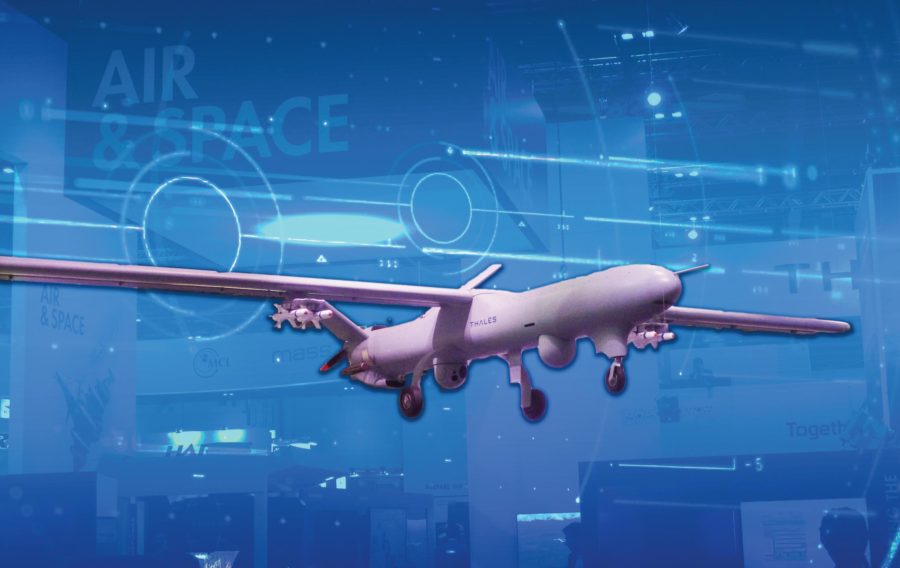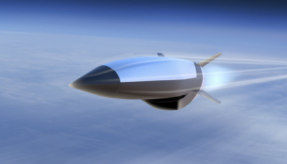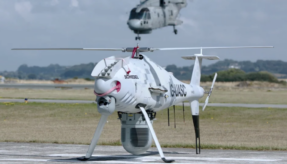
Unmanned Aerial Vehicles are currently in high demand and used across a variety of defence settings. MOD DCB features writer Paul Elliott talked to Matthew Moore, head of Thales UK’s Unmanned Aerial Systems business, about the growth of the UAV marketplace and how businesses need to know their customer to be successful.
Unmanned Aerial vehicles (UAVs) have come a long way from the first drones that emerged in the late sixties and early seventies. The last decade of the last century saw a transformation in capability in the platforms used in the first Gulf War around targeting. When the British Army embraced the Phoenix platform delivered by BAE Systems, it represented a revolutionary advance in UAV capabilities.
These days UAVs have more autonomy – the aircraft does more of the flying activity itself. An operator ensures it’s in the right place at the right time and observes to ensure the system is operating safely. More sensors are being brought onto platforms, so there is much greater ’visibility’ in all weather conditions, day or night, including through dust clouds. UAVs are becoming so common that there is a need for greater regulatory control to ensure their safe operation in civilian airspace. Unmanned aircraft have not only changed defence – there is now a vibrant commercial marketplace for these innovative products.
The UAV market size and shape is very interesting, with a whole array of different types to choose from. At the highest level are the strategic platforms like Global Hawk; big transcontinental systems that can cover the whole of the globe in around 48 hours collecting strategic information via a huge number of on-board sensors. Next are the operational platforms such as Reaper and Predator. The UK Armed Forces operate Reapers via satellite beyond line of sight (BLOS) control; such long-endurance platforms are much used in support of operational campaigns. Tactical platforms are represented by vehicles such as Watchkeeper, also used by the British Army, while smaller platforms on the market include hand-launched UAVs and even nano-UAVs that a soldier can release from his backpack.

Matthew Moore, head of Thales UK’s Unmanned Aerial Systems business
Matthew Moore spent 17 years in the British Army, mainly working with UAVs, before joining Thales around five years ago. As head of Thales UK’s Unmanned Aerial Systems business Mr Moore maintains a steady focus on the evolving capabilities of UAVs and the need to gauge customers’ future requirements.
Mr Moore said: “The UAV market is growing the more people understand what you can use UAVs for. There’s more emphasis both on not putting personnel in harm’s way and on informing operations so you can make better decisions and be in the right place. The market is growing steadily; it’s huge.”
Thales is a big name in the UAV marketplace, and Mr Moore himself is something of an authority on the subject. With competition strong the emphasis is on driving innovation. How, then, does a company such as Thales keep producing unique products?
Mr Moore explained: “I think the important thing is to really understand your customer. It’s not about guessing what’s going to happen next, although obviously there’s always some blue-sky thinking. I use the analogy of ‘customer pull and industry push’; you have to understand from your customer what the emerging trends are. Understand what’s happening in different regions of the world and what the future character of conflict is predicted to be for the Armed Forces. These global strategic trends can help predict where the UK military are going to be used in the future and what their needs will be.
“It’s also about developing technology as it evolves. There’s a reliance on understanding what the customer wants as well as a reliance on us as industry investing our own money, which we do, pushing technology boundaries into the next phase and then communicating with our customers as to what is available based on what their need is.”
It is difficult to ascertain just how many new products are driven by end user requirements compared to those driven by new technologies and research and development. Mr Moore says these things go hand in hand; there’s no point in businesses investing millions of pounds in developing a technology if the customer, or end user, doesn’t want it. The trick is rather to be attuned to what the growing trends in the market are and to be competitively priced. It pays to spend time listening to and understanding the military environment as it evolves. This is solid advice for those looking to thrive in any competitive defence market.
So, what about the future? Mr Moore believes we’re going to see more unmanned systems on the market. More people have access to UAVs in different countries, with different types of users, as the platforms become steadily more affordable. As customers use UAVs more often they become more reliant on them, and stretch their potential. This creates opportunity. Mr Moore expects to see a shift towards more autonomy in UAVs, reducing the need for an operator to put commands into the system.
There’s a lot of collaboration involved in developing UAVs, with different parts of industry specialising in different areas. Mr Moore predicts greater development of sensors, particularly the use of integrated sensors and dual sensors to maximise aircraft capability.

Watchkeeper in operation
Mr Moore is the UK lead on Watchkeeper, a ground-breaking project that both he and Thales have gained a lot of experience from. It helps him understand the UAV market and which areas hold potential for the future.
He commented: “We have learned a huge amount. Mobile systems can be a huge benefit for customers who don’t want to be constrained by infrastructure such as an airfield; yet many UAVs are pretty much fixed to a runway. Watchkeeper, however, can operate in the desert, on grass, it can be transported on the back of a vehicle, so it’s a highly mobile system – and that allows customers to be able to move the system to where they need it, as opposed to pre-positioning it at an airfield and then trying to get somewhere else.
“With the award of the platform’s airworthiness certification the regulatory authorities have allowed Watchkeeper, the first UAV of its type, to fly over civilian airspace and public areas. I think that’s a very big growth area you’ll see in the future – a lot more UAVs doing civilian tasks for the likes of blue-light agencies – and in order to do that you have to have a safety case.”
Watchkeeper remains a live product, and Thales is looking at future product enhancements based on discussions with potential customers. The British Army has already placed a requirement for the platform, and looking at the wider export environment Thales is now fine-tuning Watchkeeper to be more focused on areas such as maritime and shipping surveillance, for example.
The UAV market is fast-moving, highly innovative and very competitive. It is also a market that is steadily growing, and there are many opportunities to be seized by those who take the time to understand both where the technology is going and what their customers need.








